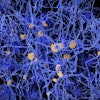Are primary care physicians too gung-ho when it comes to ordering MRIs for low back pain? Yes, according to a scheduled presentation at the 2005 RSNA meeting in Chicago. This is particularly unfortunate in light of a new study indicating that MR results in the low back do not offer significantly useful information for therapeutic planning.
In their RSNA talk (SSE22-03), physical therapist Joel Fallano and colleagues from Boston-based Brigham and Women's Hospital will discuss whether MRI orders corresponded with what they called "red flag" clinical findings.
In the meantime, Dr. Michael Modic and co-authors have ascertained that MRI does not appear to have measurable value in terms of planning for conservative care. They assessed the prognostic role and outcome effect of MRI in acute low back pain (LBP) and radiculopathy.
"The natural history of LBP is not clearly understood, and there is little consensus … on the use or prognostic value of imaging findings," wrote the study authors, who are from the Cleveland Clinic Foundation in Ohio and Hoag Memorial Hospital in Newport Beach, CA. But for clinicians treating low back pain, major decisions need to be made between conservative care and surgery, making the role of diagnostic imaging an important one, the team added (Radiology, November 2005, Vol. 237:2, pp. 597-604).
For this prospective study, 150 patients with acute onset LBP and 96 patients with radiculopathy were enrolled. They were scanned on a 1.5-tesla MRI unit, with the protocol including T1-weighted sagittal imaging, T1-weighted transverse imaging, and T2-weighted sagittal and transverse fast spin-echo imaging. Three independent radiologists read the exams.
Subjects were randomized to two groups: either imaging results were provided to the referring doctor and patient within 48 hours (unblinded), or they were withheld unless critical to patient care (blinded). After the MRI scan, patients were given six weeks of conservative care. Two patients with radiculopathy and one with LBP had surgery within 12 weeks of presentation.
The results showed that "the degenerative disk disease findings on MR images at presentation were not significantly different for patients with LBP and those with radiculopathy."
Herniation was identified in 60% of the patients upon initial exam. The rate of herniation in patients with LBP (57%) and those with radiculopathy (65%) were similar, but stenosis and nerve compression were more likely in the latter patients. Severe stenosis was more common in older subjects and in those who experienced more pain as well as myotomal weakness.
The authors also found an improvement of 50% or more in Roland scoring (back-specific measurement of function) at six-week follow-up occurred 2.7 times as often among patients with a herniation at baseline. Also at the six-week mark, 60% of unblinded patient experienced this 50% improvement in function compared with 67% of blinded patients. Of the unblinded patients, 23% were satisfied with their condition at follow-up, compared with 31% of blinded subjects.
"MR imaging did not have additive value over clinical assessment," the authors wrote. "The cause of symptoms in patients with pure LBP is diverse, and there is often ambiguity in the diagnosis.… Radiculopathy exists in a subgroup of patients and accounts for only 1% of patients with acute LBP."
They recommended that imaging be reserved for the minority of patients with persistent signs and symptoms who are likely to be surgical candidates. Relying on MRI for all LBP patients may lead to misconceptions about the seriousness of degenerative changes, they added.
At the RSNA meeting, Modic and colleagues have two presentations on tap: a scientific paper will assess MR pedicle marrow signal abnormalities in patients with LBP (SSC12-03), and a refresher course will focus on spine imaging for degenerative disease (RC705).
By Shalmali Pal
AuntMinnie.com staff writer
November 8, 2005
Related Reading
Routine x-rays offer little after lumbar spine fusion, March 22, 2005
MDCT, MRI offer flexible imaging for spinal trauma, August 17, 2004
Early MRI for low back pain achieves limited benefits, March 10, 2004
MRI no better than x-rays in management of low back pain, June 5, 2003
Copyright © 2005 AuntMinnie.com


.fFmgij6Hin.png?auto=compress%2Cformat&fit=crop&h=100&q=70&w=100)





.fFmgij6Hin.png?auto=compress%2Cformat&fit=crop&h=167&q=70&w=250)











